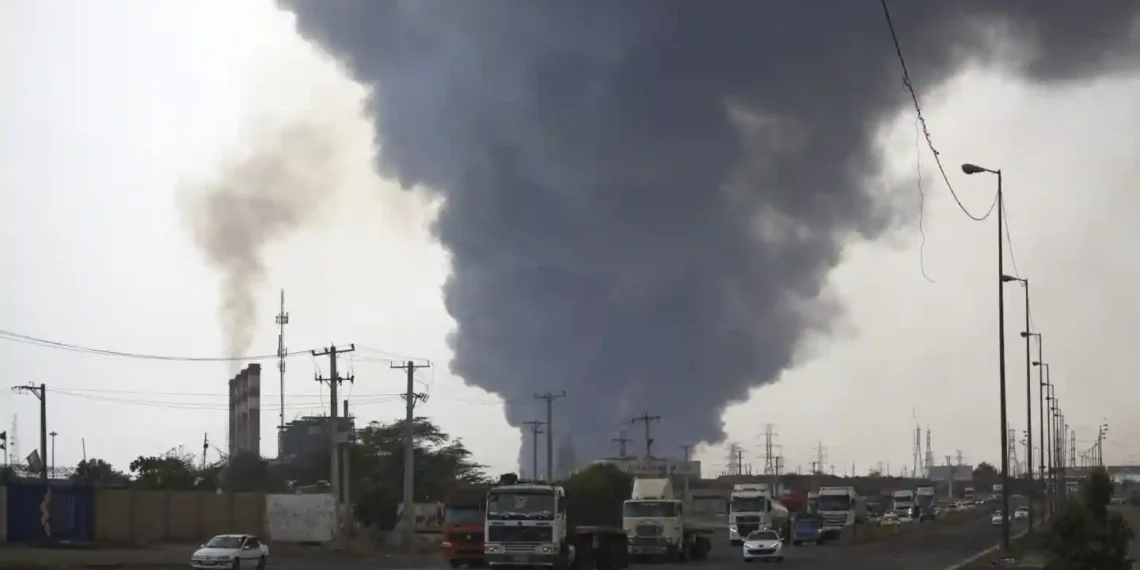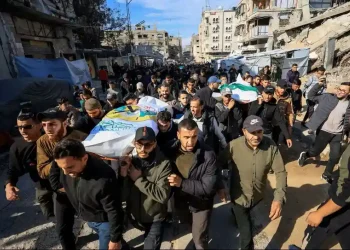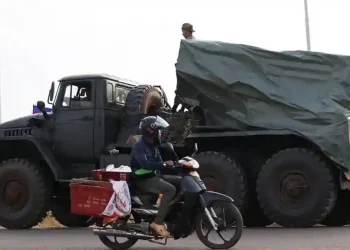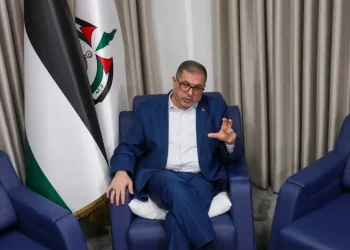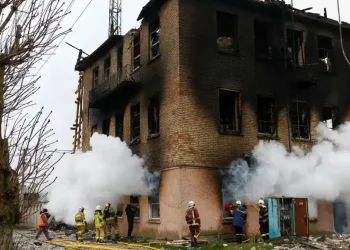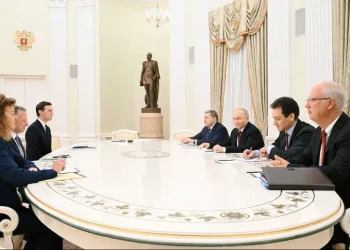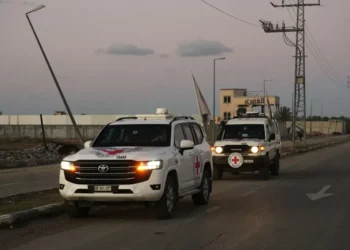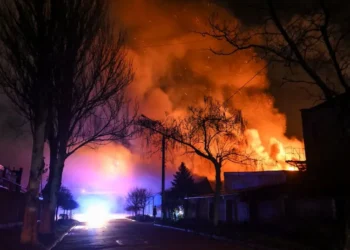Explosion at Iranian Port Linked to Charity Tied to Supreme Leader’s Office
DUBAI, United Arab Emirates – A devastating explosion that struck an Iranian port on Saturday, killing at least 70 people and injuring over 1,000, has raised serious questions about the circumstances surrounding the blast. The explosion’s epicenter was located at a facility ultimately owned by Bonyad Mostazafan, a massive charitable foundation controlled by the office of Iran’s Supreme Leader, Ayatollah Ali Khamenei.
This charity, which faces U.S. sanctions, has long been tied to the regime’s political and military apparatus, including connections to Iran’s paramilitary Revolutionary Guard (IRGC). This connection is under increased scrutiny after the blast, with reports pointing to possible links to materials critical for the Islamic Republic’s ballistic missile program.
The blast occurred at Shahid Rajaei port near Bandar Abbas, a key trade hub for Iran. The explosion’s impact was felt across the facility, which included an area associated with Sina Port and Marine Services Development Co., a company under Bonyad Mostazafan’s control. Satellite images show the terminal was almost entirely destroyed, with containers scattered across the site.
Authorities have been tight-lipped about the exact cause of the explosion, but increasing reports suggest the detonation could have been triggered by highly explosive cargo that was improperly handled. While local officials have denied that the port received materials related to missile fuel, there are growing suspicions regarding the cargo being linked to chemical components essential for solid fuel production.
Bonyad Mostazafan, or the “Foundation of the Oppressed,” is one of Iran’s most powerful and wealthiest foundations. Originally established after the 1979 Islamic Revolution to manage assets seized from the Shah’s regime, the foundation has grown to control major sectors of the Iranian economy, including energy, mining, and steel. The U.S. Treasury has estimated the foundation’s worth in the billions of dollars, and reports suggest it holds a significant portion of Iran’s GDP.
Beyond its economic reach, Bonyad Mostazafan has deep ties to Iran’s military, particularly the IRGC. The foundation’s president, Hossein Dehghan, has served as a military adviser to Khamenei and holds the rank of general in the Guard. Other figures within the foundation have similar military and political connections.
The U.S. Treasury has accused the foundation of functioning as a financial arm for the IRGC, supporting the group’s activities both domestically and abroad. These activities include funding operations targeting the regime’s adversaries and contributing to Iran’s missile program.
While authorities have downplayed the possibility of foul play or sabotage, investigations into the incident remain ongoing. Experts believe the explosion may have been linked to human error or mishandling of dangerous chemicals. Authorities did confirm that the explosion involved hazardous materials, though the precise nature of the cargo remains unclear.
One theory points to the presence of sodium perchlorate at the port. This chemical compound is a critical ingredient in the production of solid fuel for ballistic missiles. Tracking data and reports from private security firms suggest that shipments of sodium perchlorate have recently arrived at Shahid Rajaei. However, Iranian officials have repeatedly denied any connection between the explosion and missile fuel.
Witnesses reported seeing a reddish cloud in the aftermath of the explosion, a possible indicator that chemicals such as ammonia or ammonium perchlorate were involved. This cloud resembled similar plumes from other notorious chemical explosions, including the deadly 2020 Beirut port blast.
The explosion at Shahid Rajaei port comes amid increasing international scrutiny of Iran’s military capabilities. The U.S. has imposed sanctions on Bonyad Mostazafan, accusing it of enriching Khamenei’s office and supporting Iran’s missile and military activities. The U.S. Treasury also highlighted the foundation’s connections to Iran’s security forces and the IRGC.
In response to the explosion, the U.S. Treasury issued new sanctions targeting individuals and companies involved in the shipment of chemicals to Iran. These chemicals are essential to the production of missile fuel, further complicating the already tense geopolitical situation.
Following the explosion, Iranian authorities issued health warnings about air pollution in the area. They cautioned residents about the potential presence of hazardous pollutants like ammonia, sulfur dioxide, and nitrogen dioxide, which could pose serious health risks.
While the cause of the explosion remains under investigation, the tragedy has underscored the dangerous nexus between Iran’s military ambitions and the operations of powerful, government-controlled foundations like Bonyad Mostazafan. The blast is a stark reminder of the precarious situation surrounding Iran’s military infrastructure and its potential to spill over into the civilian realm.
The explosion at Shahid Rajaei port is far from an isolated incident; it reflects the broader issues surrounding Iran’s economic and military networks. As authorities investigate the cause, questions remain about the role of Bonyad Mostazafan in the explosion, its links to the IRGC, and the impact of U.S. sanctions on Iran’s strategic operations. While the immediate aftermath is still unfolding, this incident sheds light on the growing tensions surrounding Iran’s missile program and its implications for regional stability.
- The explosion at Shahid Rajaei port in Iran has killed 70 people and injured over 1,000.
- The blast occurred at a facility owned by Bonyad Mostazafan, a charity overseen by Iran’s Supreme Leader.
- The foundation is linked to the IRGC and faces U.S. sanctions for its role in funding military activities.
- The exact cause of the explosion remains unclear, though chemical materials and missile fuel are suspected.
- Health warnings were issued due to hazardous pollutants in the air following the blast.
This article was rewritten by JournosNews.com based on verified reporting from trusted sources. The content has been independently reviewed, fact-checked, and edited for accuracy, neutrality, tone, and global readability in accordance with Google News and AdSense standards.
All opinions, quotes, or statements from contributors, experts, or sourced organizations do not necessarily reflect the views of JournosNews.com. JournosNews.com maintains full editorial independence from any external funders, sponsors, or organizations.
Stay informed with JournosNews.com — your trusted source for verified global reporting and in-depth analysis. Follow us on Google News, BlueSky, and X for real-time updates.
